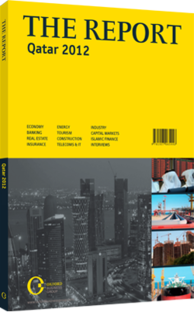David Salt, Partner, Clyde & Co, on standardising safety regulations

The continuing development and expansion of Qatar’s infrastructure in anticipation of the 2022 World Cup and in line with the National Development Strategy published in March 2011 has highlighted the need for a centralised occupational health, safety and environment (HSE) regime. Historically Qatar had various pieces of legislation in place that sought to address myriad HSE issues, but no single comprehensive piece of legislation universally applicable to HSE was available. Thus, companies seeking to comply with the provisions of various HSE-related laws and regulations have had difficulty identifying precisely the requirements applicable to them, causing particular concern where noncompliance can lead to fines or criminal penalties.
Recognising that the successful development of the infrastructure in Qatar requires standardisation and transparency, the government has, in conjunction with public and private companies, worked to implement a more uniform HSE regime.
Cabinet Resolution No. 16 of 2011 established the National Committee of Occupational Health and Safety at the Ministry of Labour. The committee is composed of representatives from various authorities, ministries and Qatar Petroleum (QP). The committee has numerous responsibilities, but perhaps the most significant of these are to: (i) propose a national policy and system for occupational health and safety; (ii) devise and revise the occupational health and safety rules and regulations; and (iii) propose the mechanisms for enforcing compliance with health and safety rules and regulations. Although not specified in the resolution, the formulation of a national policy and system for occupational health and safety suggests the adoption of a more unified approach may be in the works, potentially resulting in the promulgation of new legislation.
Furthermore, Qatar’s reliance on oil and gas revenue has contributed to the development of a comparatively bespoke body of legislation related to the energy sector. Decree No. 4 of 1977 originally entrusted QP with HSE regulatory tasks for the petroleum industry.
However, many of the provisions in that and subsequent laws reference “notional”, rather than specific, standards and practices.
Pursuant to its Decision No. 5 in 2005, the chairman of QP’s board of directors mandated its HSE Regulatory and Enforcement Directorate with assuring that HSE risks within the petroleum industry were regulated and controlled. In accordance with its mandate, the directorate in 2010 produced a reference document specifically listing the internationally recognised standards to be applied in the energy sector.
The directorate issued a memorandum on April 25, 2011 that was designed to brief industry stakeholders on the directorate’s approach to establishing HSE risk regulating guidelines. The memorandum acknowledged that existing HSE legislation contained few specifics that would control the significant risks associated with the industry. As an interim measure the directorate adopted the internationally recognised HSE practices of North America, Europe and other applicable standards. The memorandum also makes mention of a further 21 consultation papers designed to supplement existing legislation by addressing a number of issues, including pipeline management, environmental impact assessment and pandemic planning maps.
In assessing the existing HSE legislation in Qatar, the directorate reviewed and considered the content of the various laws and resolutions currently in force, and on May 5, 2011 it issued the HSE Legal Framework in the Oil and Gas Sector. The HSE framework was issued in both English and Arabic, and although it is not itself a new piece of legislation, it successfully collates in a single document the various provisions of the relevant HSE-related laws in Qatar. The framework does not replace existing legislation, but rather cross-refers specific articles to their original legislative source.
Whether a new uniform piece of HSE legislation will become a reality is not clear, but recent developments certainly suggest that as Qatar’s infrastructure develops, uniformity will be the key to clarity and success.
You have reached the limit of premium articles you can view for free.
Choose from the options below to purchase print or digital editions of our Reports. You can also purchase a website subscription giving you unlimited access to all of our Reports online for 12 months.
If you have already purchased this Report or have a website subscription, please login to continue.

